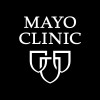
Susceptibility to High Altitude Pulmonary Edema in Subjects With Increased Hypoxic Pulmonary Vasoconstriction...
High Altitude Pulmonary EdemaIt has been shown, that subjects susceptible to high altitude pulmonary edema (HAPE)are characterized by an abnormal increase of pulmonary artery pressure at rest in hypoxia and during exercise in normoxia. This abnormal rise of pulmonary artery pressure has also been observed in about 10 % of otherwise healthy subjects without prior altitude exposure. The aim of the study is to investigate the susceptibility to HAPE in unacclimatized subjects with abnormal increase of pulmonary artery pressure at rest in hypoxia and during exercise in normoxia after rapid ascent to high altitude (4559 m).

Prophylactic Effect of Conbercept Intravitreal Injection at the Conclusion of Cataract Surgery for...
Diabetic Macular EdemaDiabetic Retinopathy1 moreDiabetic macular edema (DME) is an important cause of central vision impairment among people with diabetic retinopathy (DR), which can have a significant adverse effect on daily activities and quality of life. Diabetic patients with preexisting DME are at increased risk of worsening edema following cataract surgery. Previous studies also reported progression of DR after cataract surgery. Clinically significant DME is now classified into center-involved DME (CI-DME) and non center-involved DME (non-CI DME). Randomized clinical trials have established intravitreal antivascular endothelial growth factor (VEGF) therapy as first-line treatment for visual impairment from CI-DME and studies have addressed the influence of anti-VEGF therapy among patients with DME undergoing cataract surgery. However, for patients with non-CI DME before cataract surgery, whether anti-VEGF therapy is necessary at the end of surgery to prevent CI-DME is still clinically controversial. In order to evaluate the prophylactic effect of Conbercept (a recombinant fusion protein with high affinity to all VEGF isoforms and PIGF) intravitreal injection at the conclusion of cataract surgery for DME in patients with DR, the investigators will prospectively recruit 40 cataract patients with DR and non-CI DME and randomly assign these subjects into the study group (combined cataract surgery and intravitreal Conbercept injection, 20 cases) and the control group (cataract surgery alone, 20 cases). The primary outcomes include mean changes in central retinal thickness (CRT) and in diabetic retinopathy severity score (DRSS). The secondary outcomes include changes in best corrected visual acuity (BCVA), foveal avascular zone (FAZ), retinal vessel density (VD), the aqueous concentrations of VEGF, PIGF, interleukin- (IL-) 2, IL-5, IL-6, and IL-8.

Targeted Laser in Diabetic Macular Edema
Macular EdemaDiabetic RetinopathyOur hypothesis is that implementing laser photocoagulation (IGTL) as an adjunctive treatment to intravitreal injections should lead to a significant reduction in the need for intravitreal injections in patients with diabetic macular edema without adverse consequences for visual acuity.

Dexamethasone Intravitreal Implant in Retinal Vein Occlusion
Macular EdemaCystoidPurpose: To evaluate retinal functional improvement by means of visual acuity and retinal sensibility examination after intravitreal dexamethasone implant in patients affected by cystoid macular edema secondary to retinal vein occlusion.

The Incidence of Subclinical High-altitude Pulmonary Oedema at High Altitude
Acute Mountain SicknessSubclinical High Altitude Pulmonary EdemaThe aim of this investigation is to determine the incidence of silent interstitial pulmonary edema by chest ultrasound at moderate altitude (3905m). Secondary endpoints are to detect a suspected association with acute mountain sickness (AMS), co-morbidities and endothelial dysfunction (marker of hypoxia responses, endothelial damage and inflammation).

Effects of Hyperbaric Oxygen Therapy on Surgical Wound Healing
EdemaEcchymosisThe aim of this study is to test the effect of Hyperbaric Oxygen Therapy) HBOT (100% oxygen; 2.0 ATA; 90 minute total exposure) and compare against a hyperbaric sham treatment (HBST) (patient's breathing room air; 2.0 ATA; 90 minute exposure) in reducing edema and ecchymosis. HBOT will be applied as a single pre-operative and a single post-operative treatment for patients undergoing eyelid surgery. Briefly, patients will be exposed to HBOT 2-4 hours prior to undergoing surgery, 2-4 hours post-surgery and healing will be assessed at day 3, 10, 21, 30 & 90 days after surgery. Edema and ecchymosis will be assessed in a time series to determine the extent that HBOT reduces these clinical signs. The primary null hypothesis to test will be that no differences in scores will exist between treatment and control at day 3, 10 & 21 post-surgery. A secondary null hypothesis to test is the time required to change a score will be no different between the two groups. HBOT=hyperbaric oxygen therapy; HBST=hyperbaric sham treatment

International Consortium Investigating Early Vitrectomy in Diabetic Macular Edema Patients
Diabetes With Diabetic Retinopathy With Macular EdemaThe purpose of this research is to evaluate the effectiveness of vitrectomy for the treatment of diabetic macular edema. Diabetes is known to cause retinal blood vessels to leak, leading to swelling of the central retina (macula), and decreased vision. Removing the vitreous gel with vitrectomy surgery is known to decrease the swelling caused by diabetes. Diabetic retinopathy is often treated with laser or injections of medicine in to the eye.

Efficacy of Ozurdex® in the Treatment of Diabetic Macular Edema (DME)
Diabetic Macular EdemaThis study will evaluate the efficacy of Ozurdex® as prescribed in clinical practice in France for the treatment of Diabetic Macular Edema (DME).

A Systematic Study of Retinal Structure and Function in Diabetic Macular Oedema
Diabetes MellitusDiabetic Retinopathy1 moreDiabetic retinopathy(DR) is a sight threatening condition that occurs in persons with diabetes. DR arises as a consequence of damage to the retinal blood vessels and is related to the high and fluctuating sugar levels in the blood stream. An eye with DR will have abnormal appearing retinal blood vessels which become engorged and dilated, leaky and fragile or undergo closure. The net result is a picture of haemorrhage and or ischaemia (lack of blood supply). A particular feature of DR is the accumulation of fluid in the macula which is the central part of the retina and responsible for detailed eye sight. This peculiar form of DR is called Diabetic Macular Oedema (DMO). DMO can occur in isolation without other features of DR. DMO is commoner in type 2 diabetes where insulin resistance and abnormalities of blood fats are found. The investigators wish to study DR and DMO using high resolution retinal imaging and functional tests in normal participants, those participants with diabetes without any overt signs of disease and those with DR and DMO in order to understand how the condition develops and whether there are any unique risk factors that can be identified

Impact of the Navilas ® Micropulse Laser Treatment for Macular Edema Within the CHU Brugmann Hospital...
Macular EdemaThe Navilas® micropulse laser can be used to treat patients with macular edema and good visual acuity, which therefore do not fall within the indications for conventional treatments by intravitreal injections. The CHU Brugmann Hospital is the only center to own this laser in Belgium.This study aims to evaluate the efficacy of this laser.
